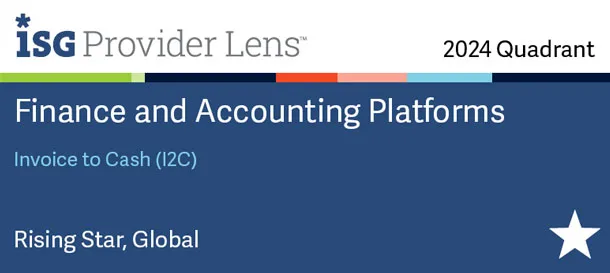Every business thrives on cash flow. When the flow of money slows, the entire operation can feel the strain. Days Sales Outstanding (DSO) is a critical metric that reveals how long, on average, it takes your company to collect payments after a sale. A high DSO is a red flag, signaling that your business is essentially extending credit for too long, tying up valuable working capital. This in-depth article will go beyond the basics to help you diagnose the root causes of a high DSO and provide actionable, proven strategies to turn the tide.
Understanding the Basics of Days Sales Outstanding (DSO)
Before we can fix the problem, we must first truly understand it. This section will provide a foundational overview, explaining the importance of DSO and how it is calculated. We will explore the difference between a good and bad DSO, noting that these benchmarks are highly dependent on the specific industry and business model. The key takeaway is that a high DSO isn’t just an accounting number; it’s a symptom of deeper operational and financial health issues. We’ll also cover the difference between DSO and the Cash Conversion Cycle.
What a high DSO number truly signals to your business
A high DSO is not merely an inconvenience; it’s a direct indicator of potential cash flow problems. We will detail how this metric impacts a company’s liquidity, its ability to cover operating expenses, and its capacity to invest in future growth. This section will use real-world examples to illustrate the ripple effect of delayed payments throughout an organization, from finance to sales and beyond.
Exploring the Common Causes Behind a Rising Days Sales Outstanding
Your DSO doesn’t just increase on its own. It’s often the result of a combination of factors, both internal and external. We’ll dissect the most common culprits, providing a comprehensive checklist for you to analyze your own business processes. From ineffective credit policies to customer-related issues, this section will offer a detailed look at the usual suspects.
Ineffective Credit and Payment Policies: Are your terms working against you?
One of the most frequent reasons for a high DSO is a poorly defined or overly generous credit policy. We will discuss the risks of offering long payment terms to unqualified customers, and how a lack of proper credit checks can set your business up for failure from the start. The section will also explore the importance of clearly communicated payment terms and the consequences of inconsistent enforcement.
Billing and Invoicing Inefficiencies: The invoice that never arrives
The collection process starts with the invoice. If your invoicing is slow, inaccurate, or confusing, it will inevitably lead to payment delays. We will highlight the importance of timely and accurate invoicing, and how simple errors like incorrect addresses or missing purchase order numbers can significantly extend your DSO. We will also explore the benefits of electronic invoicing over traditional paper methods.
Weak Collections Processes and Follow-ups: The cost of being too polite
Many businesses struggle with the collections aspect, either due to a lack of resources, fear of damaging customer relationships, or simply an inefficient process. This section will address the importance of a proactive collections strategy. We will cover best practices for sending automated reminders, escalating overdue accounts, and maintaining clear, professional communication throughout the dunning process.
Customer-Related Challenges: The impact of client behavior on your DSO
Sometimes, the problem isn’t with your business, but with your customers. We will examine how a small number of key clients with slow payment habits can disproportionately affect your DSO. This section will also touch on how to identify and manage customers who consistently pay late, and the role of customer satisfaction in timely payments.
Practical Strategies to Dramatically Reduce Your Days Sales Outstanding
Now that we’ve identified the problems, it’s time to talk about solutions. This section is the core of our guide, providing a powerful arsenal of strategies you can implement today. We will present these strategies as a step-by-step action plan to help you lower your DSO, improve your cash flow, and strengthen your business’s financial foundation.
Optimizing Your Credit and Onboarding Process: A strong start is a fast finish
The best defense against a high DSO is a great offense. We will provide guidance on how to create a robust credit policy that includes thorough credit checks, a clear approval process, and customized payment terms based on customer risk. We will also discuss how to effectively onboard new clients with a clear understanding of your expectations and policies.
Leveraging Technology to Streamline Your Accounts Receivable: The power of automation
Manual processes are slow and prone to error. This section will explore the transformative impact of accounts receivable (AR) automation software. We’ll detail how these solutions can automate invoicing, send timely payment reminders, and provide a central dashboard for tracking collections progress, thereby eliminating common manual errors and accelerating your cash cycle.
Implementing Early Payment Incentives and Discounts: Motivating your customers to pay faster
A great way to speed up payments is to make it financially beneficial for your customers to do so. We will outline different early payment discount structures, such as “2/10, net 30,” and discuss how to implement these programs effectively without negatively impacting your profit margins.
Improving the Collections Process with a Modern Dunning Strategy: From reactive to proactive
A modern collections strategy is about more than just sending angry letters. We’ll delve into the importance of a well-defined dunning process, including automated, personalized reminders via email and text, and a clear escalation path for past-due accounts. We will emphasize the importance of communication and collaboration between sales and collections teams.
Offering Flexible and Diverse Payment Options: Making it easy to pay
In today’s digital world, a one-size-fits-all payment method is a non-starter. We will discuss the importance of offering a variety of payment options, including credit cards, ACH, and online portals. We’ll explain how providing convenience to your customers can directly translate to faster payments and a lower DSO.
How Emagia helps to reduce Days Sales Outstanding
Emagia provides an intelligent order-to-cash platform that leverages AI to help businesses dramatically reduce their Days Sales Outstanding. By automating and optimizing every step of the accounts receivable process—from credit management and invoicing to collections and cash application—Emagia’s solutions eliminate manual inefficiencies, predict payment behavior, and provide a clear, real-time view of your AR. The platform’s predictive analytics help you prioritize collections efforts on the accounts that matter most, while its automated communication tools ensure timely and professional follow-ups. This intelligent approach not only lowers your DSO but also frees up your teams to focus on strategic tasks, ultimately improving your working capital and financial health.
Frequently Asked Questions on Days Sales Outstanding
What is a good Days Sales Outstanding number?
While the ideal DSO varies by industry, a number between 30 and 45 days is often considered a healthy benchmark for many businesses. However, it’s more important to compare your DSO to your industry average and to your company’s own historical performance. A consistent or decreasing DSO trend is generally a positive sign.
How is Days Sales Outstanding calculated?
The basic formula for calculating DSO is: (Accounts Receivable / Total Credit Sales) x Number of Days in Period. Accounts Receivable should be the ending balance for the period, and Total Credit Sales should exclude any cash sales. This provides a snapshot of the average time it takes to collect payments.
What is the difference between DSO and DPO?
DSO measures how long it takes a company to collect its receivables (money owed to you), while Days Payable Outstanding (DPO) measures how long it takes a company to pay its own bills (money you owe others). Both are crucial for managing working capital; a healthy financial strategy aims to lower DSO while carefully managing DPO to optimize cash flow.
Can a DSO be too low?
While a lower DSO is generally better, a DSO that is too low could indicate that your credit policies are excessively strict. This could potentially alienate customers and cause you to lose sales to competitors with more lenient payment terms. The goal is to find the right balance—a low DSO that doesn’t compromise sales or customer relationships.
What are the main causes of a high DSO?
The main causes include inefficient collections processes, a lack of automated invoicing, weak credit policies, a high number of overdue invoices, and a handful of large customers who are consistently slow to pay.



